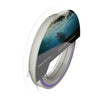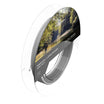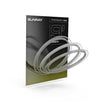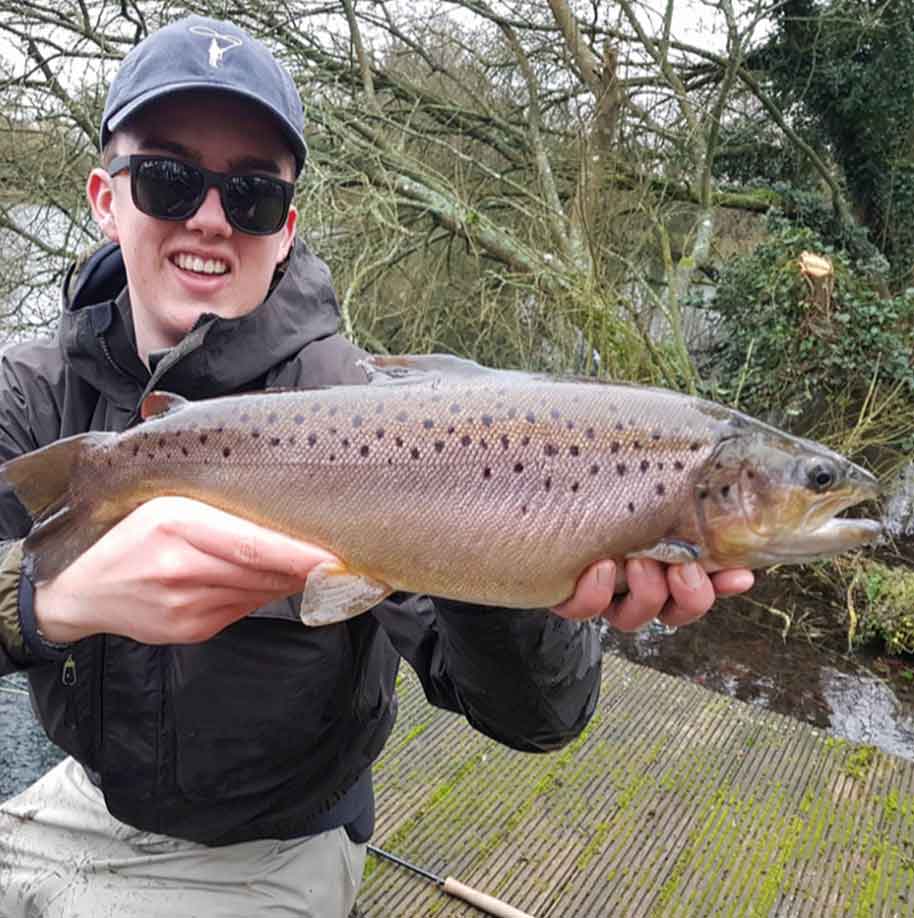Written by David Southall with our thanks.
When I first got into fly-fishing I was more than happy to catch stocked trout. They were usually significantly bigger than the wild fish & easier to catch. Over the years my feelings have changed considerably to the point where, at least in rivers, I would ban stocking with farmed fish. So why am I now so anti-stocked trout? There are a number of reasons, which I will explain:
My main reason for disliking stocked trout is the damage that they undoubtedly do to the wild fish (trout & grayling). The problem is not just increased competition for food & lies but also increased predation of the wild fish. I’ve watched stocked browns & rainbows herding grayling & trout fry into the shallows & have caught rainbows in late autumn that have been stuffed to the gills with brown trout spawn. Furthermore I’ve had big rainbows attack & kill small trout & grayling whilst I’ve been bringing them to the net. There is much evidence from clubs that have stopped stocking to show that the fishing improves significantly when there is no stocking with farmed fish. Below is some evidence from my own studies:
As a trained scientist I keep detailed records of my catches & in particular, on one small local river, where the lower reaches are heavily stocked with big trout & the upper reaches are not stocked, I have calculated my catch rate per hour to monitor the effect of stocking.
TABLE OF AVERAGE CATCH RATE PER HOUR over the last 16 Years
|
STOCKED AREAS |
UNSTOCKED AREAS UPSTREAM |
|
4.65 |
10.47 |
The Graph below shows the effect of stocking with big trout on the grayling population of the same small stream. In 2004 & 2005 the size of stocked fish was reduced from an average size of 16” to 10 &11”. Then in 2006 the club returned to stocking with big fish.
Added to the above is the poor survival rate of stocked fish. Evidence from marked fish suggests that few stocked fish survive into the following year. On my local rivers many steadily drift downstream, probably in search of better feeding since they have been accustomed to a regular feed of high protein pellets in the trout farm. Others, being naïve & not river-wise undoubtedly fall easy prey to predators. A high proportion of the stocked fish that I catch show signs of predation, particularly by cormorants. So the stocked fish oust the wild fish from their homes, or they eat them, only to disappear by next year, leaving fewer wild fish in the river, thus necessitating more stocking!
All clubs that stock their rivers with farmed trout should watch the following You Tube video which explains why in 1974 the USA state of Montana stopped stocking their rivers & how the trout fishing improved dramatically as a result. For example populations in the upper Gallatine River increased from 450 fish per mile to 2500 per mile.
https://www.youtube.com/watch?v=U_rjouN65-Q
Since stocked trout often behave as shoal-fish, having lost much of their natural territorial behaviour in the crowded conditions of the stew pond & because they are not river-wise they provide a significant attraction for predators such as cormorants. By heavily stocking our rivers (putting a regular supply of food ‘on the bird table’) we ensure that cormorants always have a good breeding season & also that they will continue to visit our river.
The poor quality of many stocked fish is a further reason for stopping this pointless practice. Damaged fins, genetic deformities from inbreeding & poor fighting quality do not endear these inferior fish to me.
Disease transmission is another potential problem associated with overcrowded, damaged fish. I often catch stocked fish with fungal infection due to injuries incurred in the stew pond & in 2006 a North Yorkshire fish farm was a probable source of Viral Haemorrhagic Septicemia found to be affecting grayling in the river on which the farm was sited. Since many trout farms sell their fish to clubs outside their river catchment there is always the potential for transmission of infection.
Transmission of alien species is another potential problem when fish & water are transferred between rivers & river catchments. Signal Crayfish, Demon Shrimps, Killer Shrimps & many other harmful species could be spread via the stocking wagon unless significant precautions are taken.
Then there is the ‘dumbing down’ of our sport. I know of some anglers who never visit my local river until the new season’s stock fish have been put in. They often tell me “There is no use going before because the wild fish only grow to about 12” & so aren’t worth catching”. They want big, easy to catch fish rather than beautiful, challenging fish that are the size that nature intended for the river; all very sad!!!!!!!!
Lastly my impression is that stockies don’t rise as freely as the wild fish. If I want a stockie for a friend’s freezer all I do is change my dry fly for a Peeping Caddis, which I cast into one of the deep pools & twitch it back for guaranteed success.
So there you are, my thoughts on stocking. You may or may not agree with me but whatever your opinion I hope I have made you think & I hope that I have persuaded some of the pro-stocking brigade to change their minds. It is no accident that the most prolific waters that I know are all unstocked wild trout & grayling fisheries & some produce trout big enough to challenge any stock fish.

- Mangled tail with Saprolegnia fungal infection on a freshly stocked trout

2. Give me a stunning little wild trout every time!

- Cormorants arrive with the stocking wagon!
































